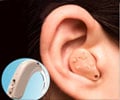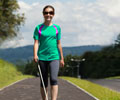Healthy, hearing babies born to deaf parents and exposed mainly to sign language use their hands to silently ``babble,'' indicating that babbling
Healthy, hearing babies born to deaf parents and exposed mainly to sign language use their hands to silently ``babble,'' indicating that babbling serves as an important precursor to learning a language.
Dr. Laura-Ann Petitto, a professor in the departments of Psychological & Brain Sciences and Education at Dartmouth College in Hanover, New Hampshire believes, that this must be the key that lets them unlock the secret of their language.Conventional wisdom suggested that babies' babbling is simply the result of opening and closing their mouth and jaw. However, his research contends that babies' brains are sensitive to the rhythmic patterns in language and use babbling to break down speech into understandable chunks.In order to test that theory, Petitto compared three babies with normal hearing to three babies with normal hearing who had been born into homes of deaf parents who mainly communicated to them through sign language. The babies were videotaped and computers tracked the babies' hand movements.
According to him, if language is acquired simply by a motor for children to master control over their lips and tongue, then all the babies should have had hand motions that are similar. However, if babies are sensitive to linguistic patterns, then the babies exposed to sign language should produce significantly different kinds of hand motions.
Indeed, he found that only the babies born to deaf parents silently ``babbled,'' making hand motions that were significantly slower and corresponded to chunks of words in sign language. ``Essentially they were babbling on their hands,'' Petitto said. ``They were literally producing a bite-sized nugget of a sign.''
This finding shows that babbling serves a linguistic purpose, rather than acting solely as an accidental byproduct of jaw motion.







